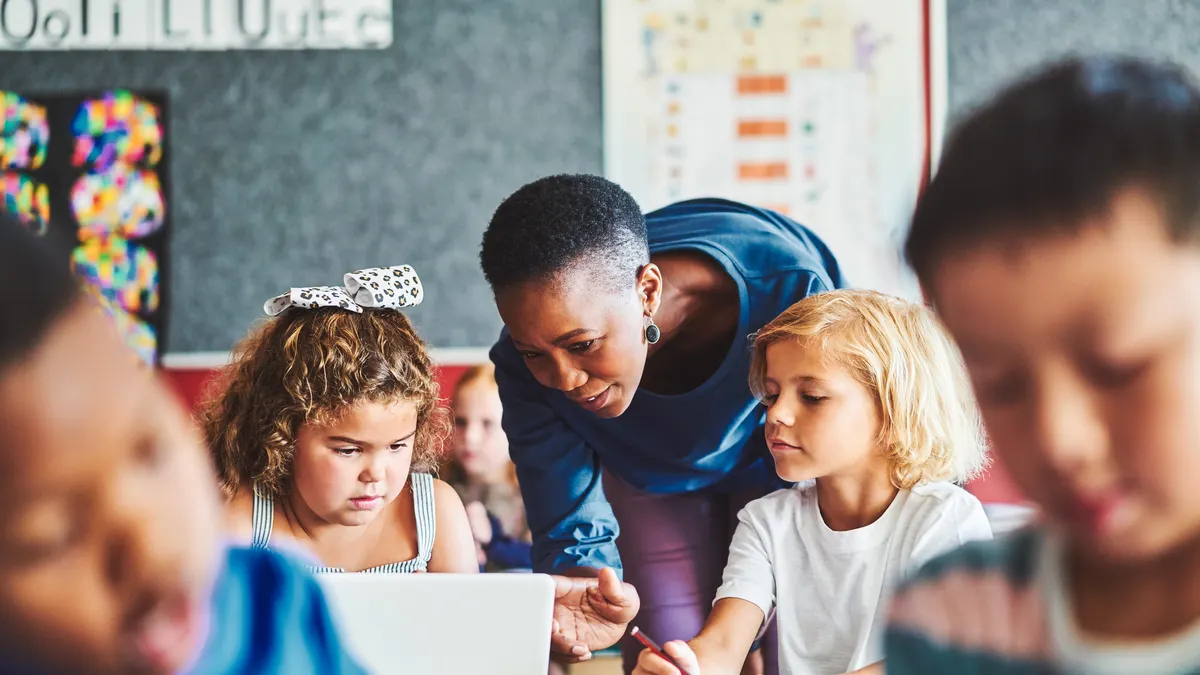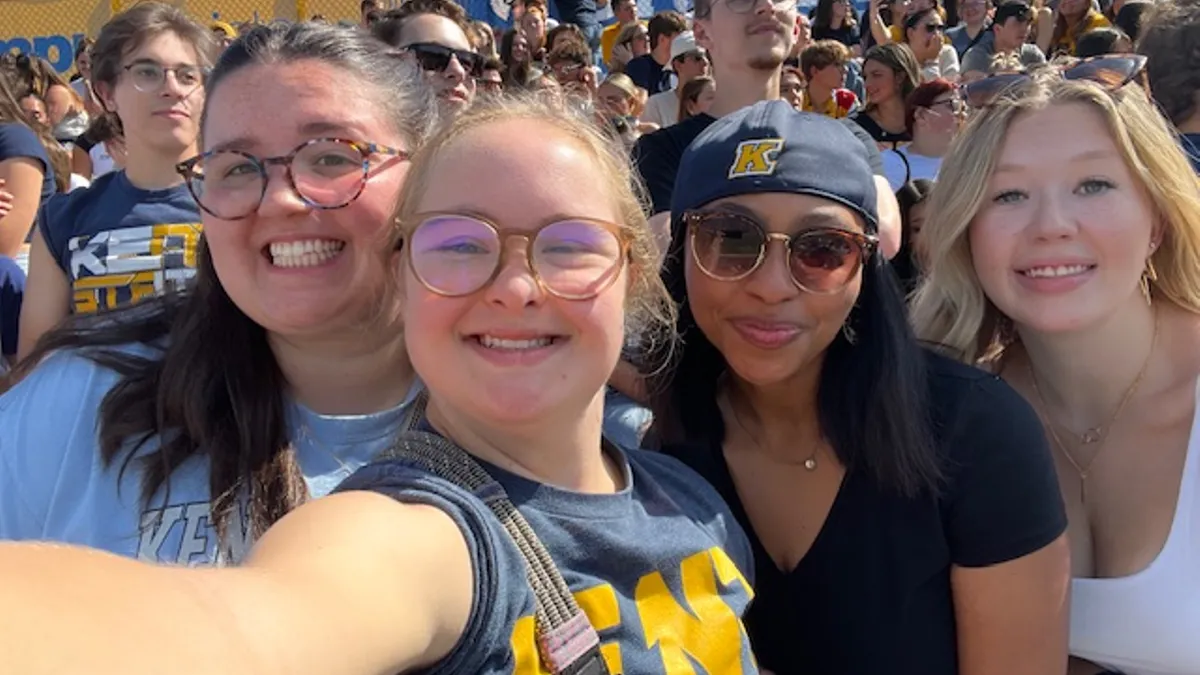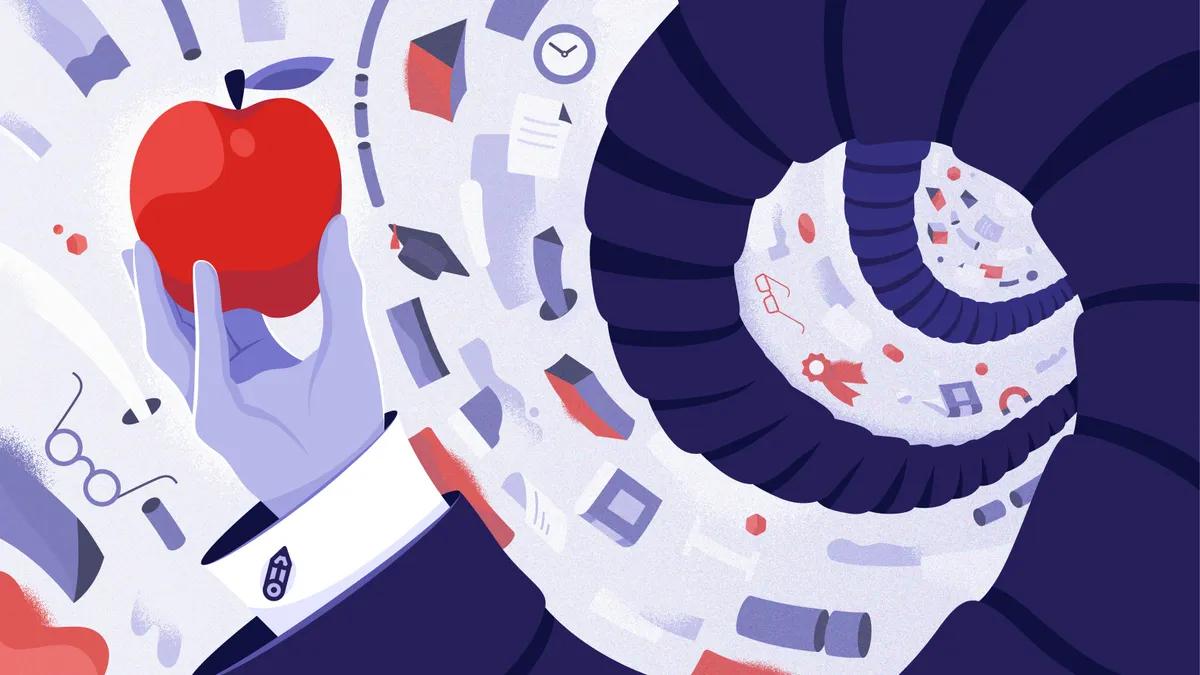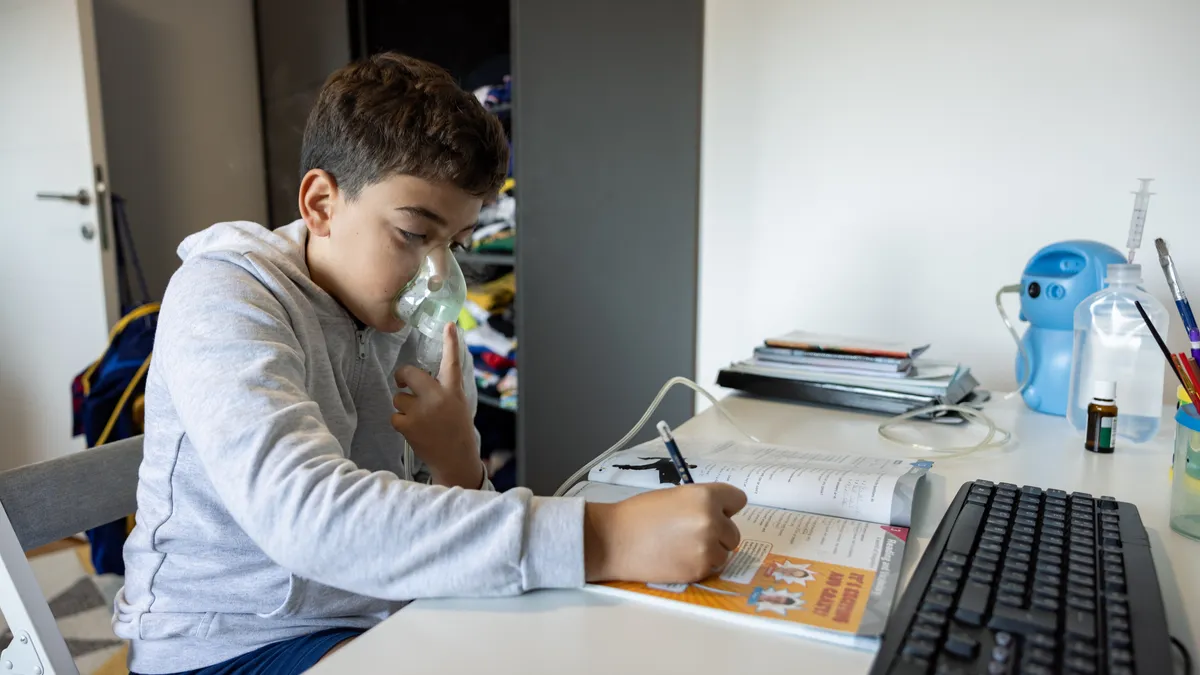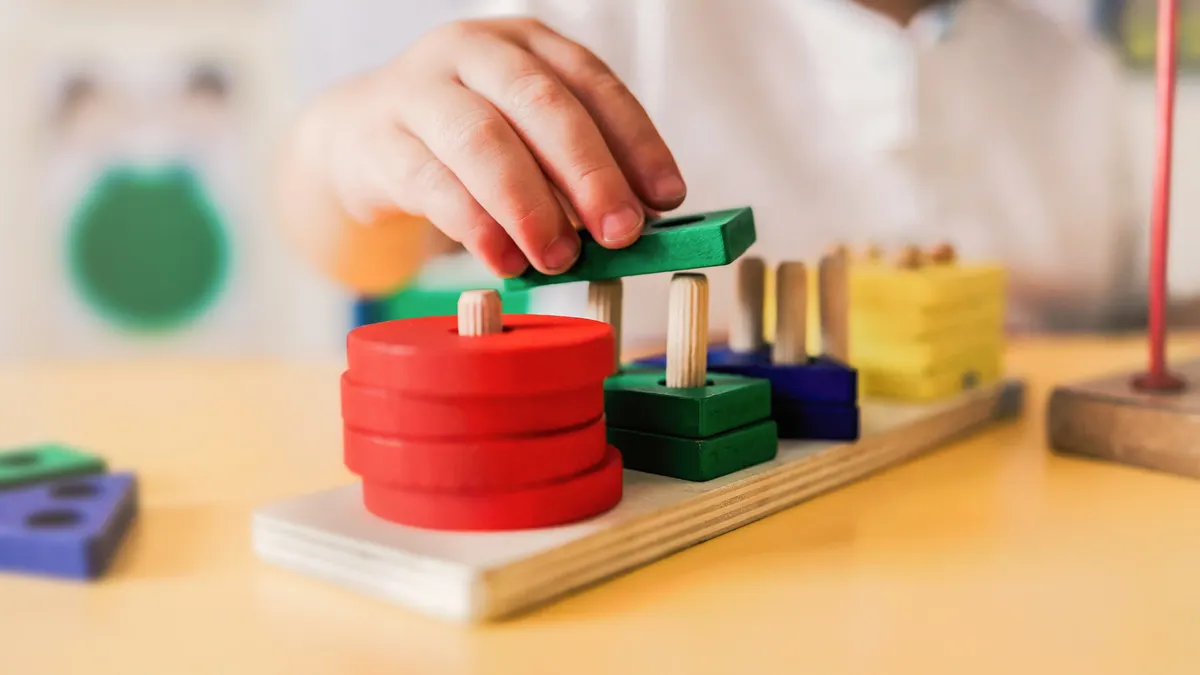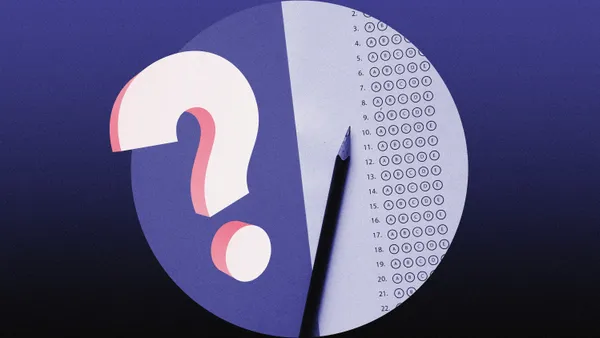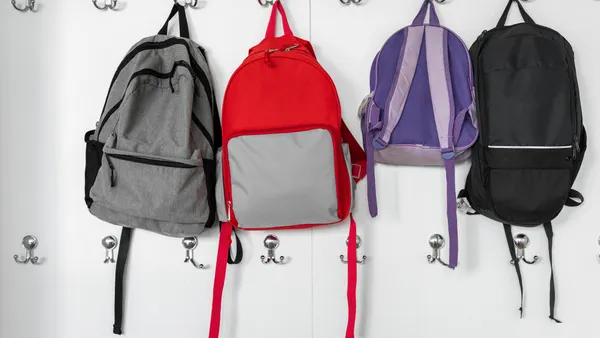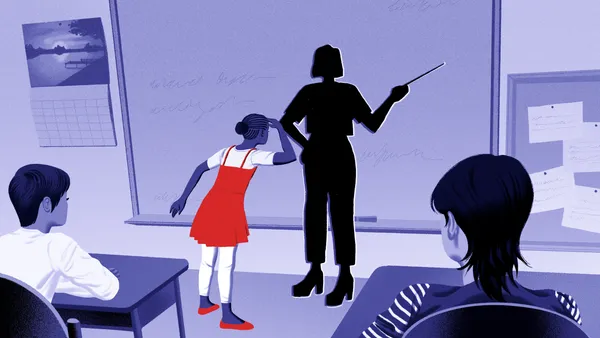This is the latest installment of Study Hall, an occasional series that serves as a one-stop shop for must-know information on critical topics impacting schools. For previous installments, click here.
The least restrictive environment provision in the Individuals with Disabilities Education Act requires that schools educate students with disabilities alongside students without disabilities to the "maximum extent appropriate."
This means the general education classroom should be the first consideration when determining an educational setting for a student with disabilities.
Inclusive learning environments have several benefits for students with disabilities compared to students in more segregated settings, including higher academic performance, fewer discipline incidents and better post secondary outcomes, according to the U.S. Department of Education, educators, researchers and families.
But even though LRE is a core principle of IDEA, applying it in practice can be challenging for schools. Here's what you should know.
What is LRE?
IDEA's LRE inclusive practices apply to classroom settings as well as extracurricular and nonacademic activities. Federal guidance also said LRE applies to students in public and private institutions or other care facilities.
The most restrictive learning environment is one that includes only students with disabilities. Placing a student in a more restrictive environment — or removing students with disabilities from general education settings — should only occur if the severity of a student's disability means participation in a general education setting cannot be achieved even with the use of supplementary aids and services, according to the IDEA.
Additionally, a state's academic standards must apply to all public schools and students, including students with disabilities. However, students with the most significant cognitive disabilities may learn from alternate academic achievement standards aligned with the state’s content standards.
How is LRE decided?
For students with disabilities, their learning environment is decided based on their individual needs by a team of teachers, administrators, related service providers and the student's family, all of whom support the student's individualized education program.
The student's IEP can detail the types and frequency of supports and services the student should receive in general education and special education classrooms in order to make progress. This is why many advocates and educators consider LRE as means to provide special education services, rather than a physical location.
Students with disabilities could have a variety of educational settings:
- Have full-day participation in a general education classroom with supports, if needed.
- Spend part of the day in a general education classroom and receive small group or individualized instruction in a special education classroom.
- Attend all classes in a special education classroom.
- Attend a specialized program outside of their assigned school or district.
Because placement in an educational setting is individualized for students with disabilities, schools should have a continuum of alternative settings to meet students' unique needs. Even if a student attends their core classes in a special education classroom, they may likely participate in lunch and recess and other classes like art, physical education and music alongside peers without disabilities.
The Education Department's Office of Special Education and Rehabilitative Services and Office of Elementary and Secondary Education, in joint guidance issued in January, reaffirmed that the decision on where a student with disabilities learns cannot be based on factors such as "category of disability, severity of disability, availability of special education and related services, configuration of the service delivery system, availability of space, or administrative convenience."
In addition to the individualized supports provided to students with disabilities, classroomwide and schoolwide practices like multi-tiered systems of support, universal design for learning and positive behavioral interventions and supports can also help educators meet the needs of a variety of learners in general education and special education classrooms.
Why LRE can be challenging
Some of LRE’s challenges include severe special educator shortages that limit students' access to individualized supports. Special education and general education funding shortfalls can also negatively impact class sizes, individualized services, access to qualified teachers, compliance with IDEA rules and other activities.
But disability rights experts and those in the special education field point to evidence-based practices that can help overcome some of these challenges. Those include the use of MTSS, PBIS and UDL. Educators can also tap into resources from technical assistance centers like the IRIS Center and the Early Childhood Technical Assistance Center. Additionally, Special Education Parent Training and Information Centers are a resource for parents to better support their children.
"Inclusive educational practices rely on learning environments that are intentionally designed to hold high expectations for the success of each student through meaningful access to the general education curriculum and grade-level State academic standards," said the OSERS and OESE guidance.
Why LRE matters
Until IDEA was signed into law 50 years ago in November, there was no federal guarantee that students with disabilities could receive a public education. In fact, in 1970, U.S. schools educated only 1 in 5 students with disabilities. Many states at the time had laws excluding certain students, including those who were deaf, blind, emotionally disturbed or had an intellectual disability, according to the Education Department.
Low expectations or no expectations for the progress of students with disabilities can lead to students' lower academic achievement, fewer employment and postsecondary options and isolation within their communities, OSERS and OESE's letter said.
Not only is educating students with disabilities in the least restrictive environment beneficial to students' academic and social development, LRE is part of IDEA's accountability system. To ensure states and districts are compliant with IDEA, states' adherence to the LRE requirement is integrated into the Education Department's Office of Special Education Programs monitoring program.
Nationally, students with disabilities spend most of their school day in general education classes, according to federal data. In fall 2022, 67% of students served under IDEA, ages 3-21, spent 80% or more of the school day in general education classes. That was up from 61% of students in 2012.
Despite students with disabilities spending more time in general education classrooms, “the achievement gap between students with and without disabilities is significant, ongoing, and long standing," according to the January guidance from OSERS and OESE.
For instance, the 2024 performance on the National Assessment of Educational Progress math and reading scores declined or held steady for 4th and 8th grade special education students compared to NAEP results from 2022 and 2019.
For the 2024 4th grade reading assessment, of the test takers who were students with disabilities, 78% scored below the average score of 215, compared to 40% of the test takers who were students without disabilities.
In 2024, NAEP performance for all students declined in reading and math compared to 2019 results.
In 2021-22, the four-year adjusted cohort graduation rate for students with disabilities was 71% percent, while the overall U.S. average graduation rate was 87%, according to federal data.
Disability advocates, educators, researchers and families contend that general education and socialization with peers without disabilities ensures better outcomes for students with disabilities and has benefits for students without disabilities.


